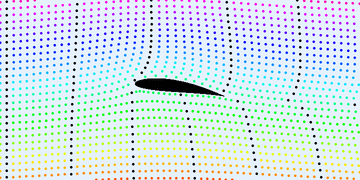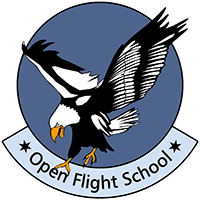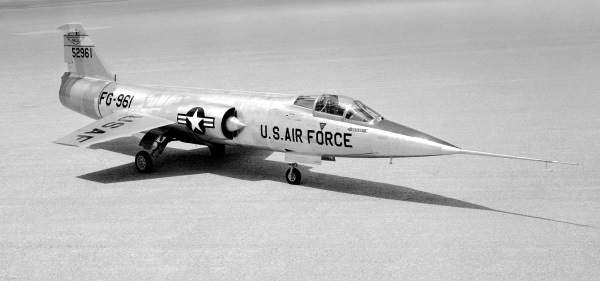Basics of Aerodynamics
Lift
The aircraft is pushed forward by propulsion. This causes air to flow around the aircraft wing. The special shape of the wing ensures that the air flowing around the wing on the upper side is accelerated.

Picture: Kraaiennest, License: CC BY-SA 3.0, Link
This creates a reduced pressure on the top of the wing. The wing is thus pushed upwards from the higher pressure beneath, creating lift. If the speed is increased, the lift also increases. But the lift can also be increased by changing the wing profile (e.g. by extending the landing flaps). This allows you to compensate for reduced speed (and consequently reduced lift from airflow).
The shape of the fuselage also has a considerable influence on lift. You can see this immediately when you look at an F-104 with very short wings:
There are also wing shapes that are not constructed as described above. In fighter aircraft and aerobatic aircraft, the lift is not increased by the wing shape to allow manoeuvres such as inverted flight.

